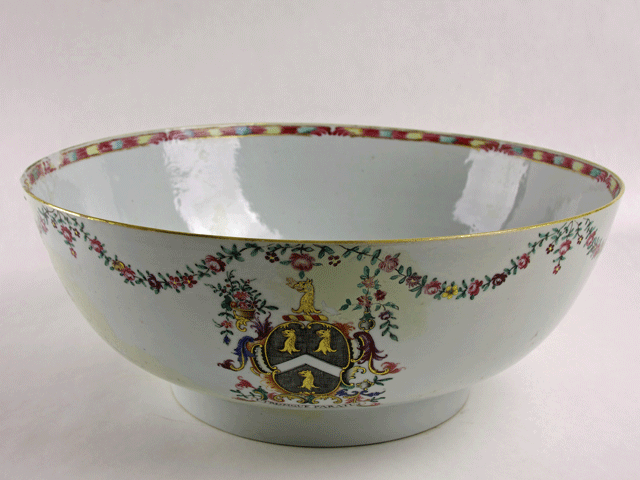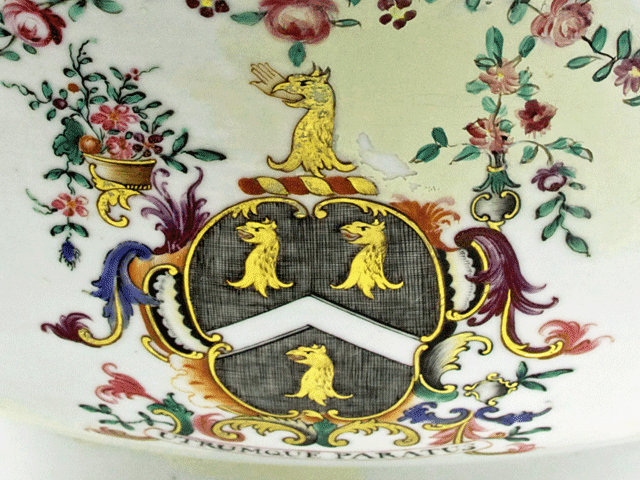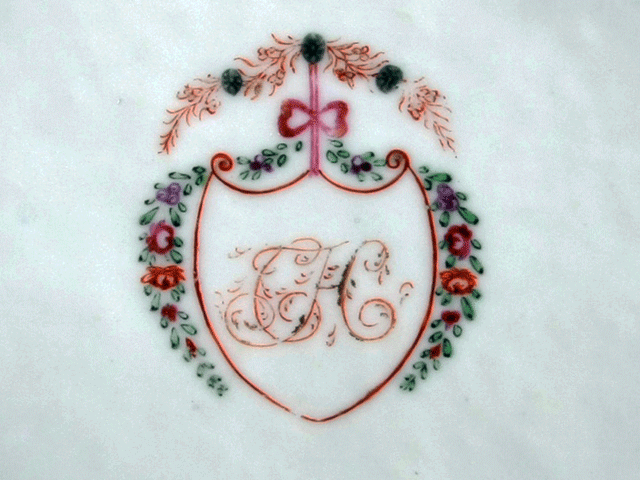
2012.91.250, punch bowl; Qing dynasty, A.D. 1700s–1800s
Eason Eige Collection; photo by T. Ocken

2012.91.250, punch bowl; Qing dynasty, A.D. 1700s–1800s
Eason Eige Collection; photo by T. Ocken
At first, European elites were pleased to have Chinese porcelain at all. It was far superior to the pottery made in Europe, and most people couldn't afford it. To use modern terms, owning porcelain distinguished the one percent from the 99 percent. Soon, however, an old European social competition changed how porcelain was made. Noble families were allowed coats of arms, but commoners were not—so to distinguish your noble self from the newly rich but socially vulgar merchants, why not put your coat of arms on the latest in luxury goods?
Easier said than done: the people who made porcelain lived on the other side of the planet from Europe. In response, noble families sent drawings of what they wanted via sailing ships (the East Indiamen) to Guangdong. There, the local artists painted table services to order, and the sailing ships then took the finished pieces all the way back to Europe. Today we're used to online purchases with next day delivery; back then the families were happy with next year delivery! Once the new "china" was in the family home, and the envy of the county, it was worth the wait.
The next image shows a close-up of the coat of arms on the punch bowl.
The motto Utrumque Paratus translates loosely as "prepared either
way." We're not sure which family or institution used this coat of arms
so if you recognize it, please let us know! The yellow discoloration in the
upper right quadrant of the photo is from an old repair.

Photo by T. Ocken
"Armorial porcelain," as such items are known today, first appeared in the
1500s. It was uncommon until after 1700, but afterwards thousands of sets
of "china" with coats of arms were ordered. Commoners, who weren't allowed
to use coats of arms, came up with a clever substitute:
porcelain sets with elaborate monograms. To see an example of
monogrammed porcelain, please click on the picture below.

Monogrammed porcelain (click on picture to enter)
See source code for copyright information. Page last revised on March 8, 2016. Please report problems to toh@unm.edu